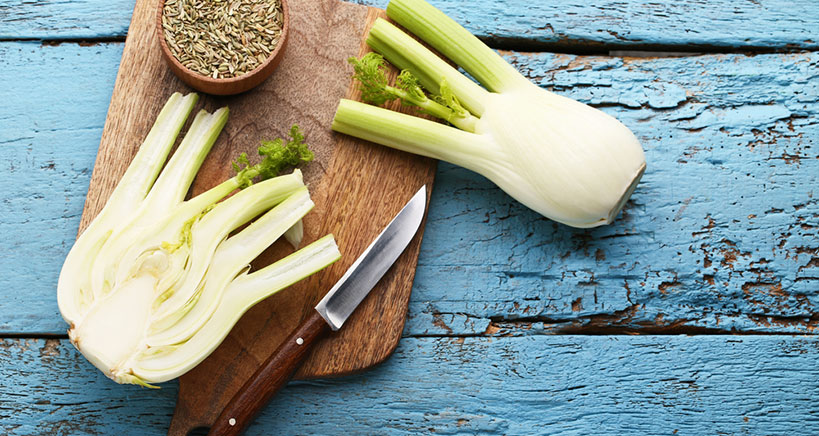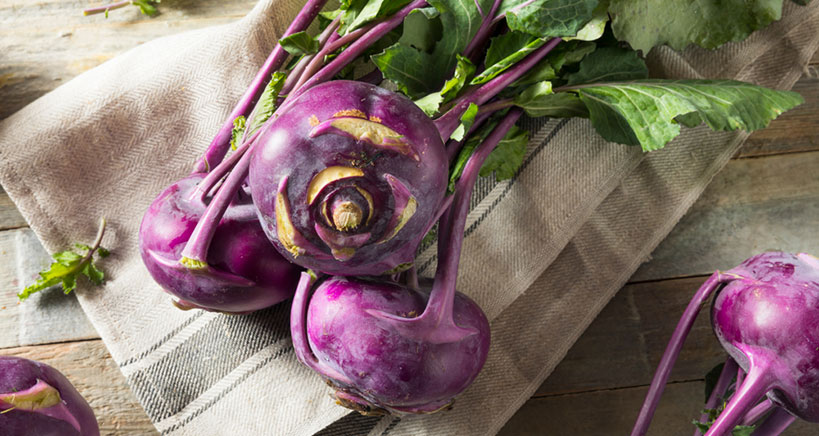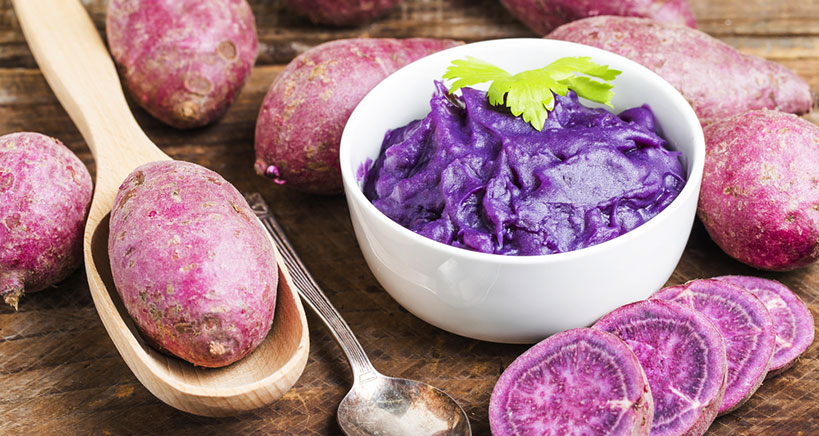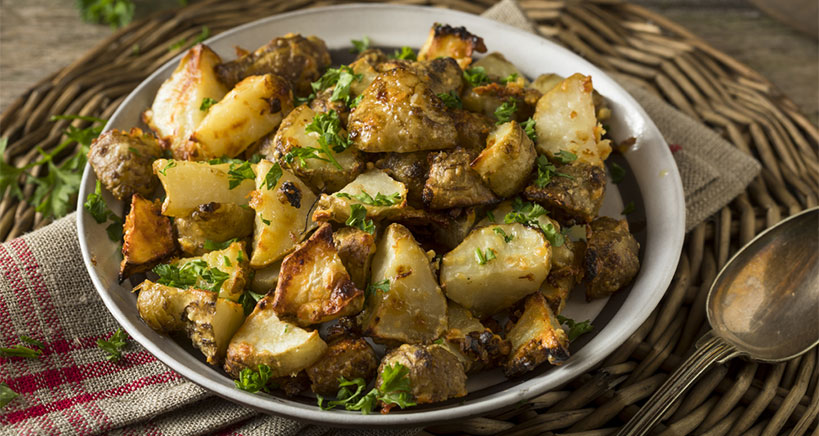
With the fall vegetable season still in full bloom and the winter vegetable season looming, now is the perfect time for your restaurant, catering service, or other eatery to cash in on the plethora of delicious, nutritious vegetables currently available. To help your menu really stand out from the crowd, we have created a list of some the most unique fall and winter vegetables on the market, guaranteed to tweak your customers’ culinary curiosity, please their palates, and keep them coming back for more.
The selections – including shiso, fennel bulbs, crosnes, fiddleheads, celeriac, and many more – are some the most unusual, head-turning vegetables you have ever heard of. Add these veggies to your restaurant’s menu, combine them with some savvy business-boosting marketing techniques (think Pinterest and Instagram…), and what you have is a recipe for winter recipe success.
And that’s not all. If your chefs feel like they have exhausted their repertoire of recipe ideas for dishes made from run-of-the-mill potatoes, onions, squash, and other staples, it’s time to step out of the culinary box and sink your teeth into the likes of blue potatoes, tree onions, Hakerei turnips, delicata squash, Chinese water spinach, Chinese artichokes, Jerusalem artichokes, dragon carrots, black radishes, white asparagus – and the list goes on.
New Vegetables for Your Foodservice Menu
So let’s take a walk on the wild side and explore the wonderful world of vegetables that you and your customers may not have heard of yet – and more importantly, may have never tasted before.
Fennel Bulb
Fennel, a member of the parsley family, is a terrific flavor-enhancer that looks like the end of a celery stalk but that is packed with crunch and flavor. The white bulb can be eaten raw or cooked and has a sweet anise flavor that is perfect for tossing with a salad, adding to a dip, or mixing with a pot of chicken soup. Its flavor also blends well sautéed with onion and tastes great on top of sweet potato, butternut squash, and mixed with Brussels sprouts.
Red Perilla (Shiso)
A Japanese herb also known as red perilla, shiso’s pleasantly aromatic leaves have a long history of being used both in ancient medicine and as part of tea and Japanese cuisine. Use it freely as a basil substitute in recipes and to season a wide range of foods.

Celeriac
It won’t win a prize for beauty, but this knobby, oddly shaped root vegetable is nutritious, delicious, and greatly underappreciated in the Western world. On the other hand, celeriac has a long history of culinary use in Europe where it is added to both cooked dishes and salads. Contrary to its name, it is the root of the celeriac plant (and not the root of a celery stalk), however its taste is similar to celery and parsley with some added crunch. In addition to its many health benefits, celeriac contains little starch yet can be used as a potato substitute in most recipes.
Crosnes
If you’re looking for a colorful ingredient to add to salads, sushi plates, and dips or to use as a good-looking garnish, look no further than crosnes – the Asian red and green small tuber vegetable that leaves a lasting impression. A member of the mint family and also known as Stachys affinis, Chinese artichoke, and Japanese artichoke, the perennial root vegetable’s attractive, spearmint-like leaves are harvested like potatoes and have become a gourmet sensation at many upscale restaurants. If you are a forward-thinking chef servicing adventurous consumers, this is one seasonal vegetable you don’t want to miss.
Fiddleheads
As far-out looking as their name suggests, fiddleheads come from young fern trees and boast a wide variety of vitamins and minerals, including omega-3 fatty acids and a plethora of antioxidants. They look like tiny scrolls that popped out of the dirt and consumers describe their taste as a cross between asparagus and spinach with some added nuttiness. These standout veggies are a great addition to any restaurant’s menu and are typically steamed and added to stews, soups, and salads.
Kohlrabi
One of the most popular fall and winter vegetables on the market despite its odd shape, kohlrabi (aka German turnip) is from the same Brassicas family as kale, broccoli, cabbage, cauliflower, and Brussels sprouts. Both kohlrabi’s white and purple varieties can be eaten raw or cooked, however be sure to peel away the tough outer layer of the bulb first, as well as the fibrous layer below, to get to the inner edible part of the bulb.
Sliced kohlrabi bulb is great added to salads or roasted as fries, while its leaves are typically sautéed and added to a range of dishes. So next time you pass the farmers’ market and see what looks like a cabbage with long, leafy green antennae-like shoots, be sure to run in and buy some kohlrabi and add it to your customers’ favorite dishes.
What’s New in Potatoes?
You may be surprised to learn that the answer is: A lot! Check out the following largely unknown varieties of this culinary staple.
-
- Blue Potatoes: While they taste like regular potatoes, these visual stunners will upgrade the look of any dish and captivate consumers young and old. Blue potatoes’ rich, unique hues come from their anthocyanin content (a type of flavanoid with antioxidant effects), which gives rise to marbled blue-and-white interiors as well as bluish-purple varieties that make head-turning mashed potatoes.

- Okinawan Purple Sweet Potato: AKA Japanese sweet potatoes, their flesh boasts an appealing shade of purple while their taste is described as similar to regular sweet potatoes but richer and more winey. A great way to add color to classic dishes, feel free to use them as a sweet potato substitute in any recipe, but since they are somewhat drier and denser, cook for longer.
- Oca: If your customers are hungry for a new type of potato with a slightly tangier taste than a typical yellow potato and with an added crunchy texture, it’s time to introduce oca to your menu and recipes. Originating from South America where it is a chef’s staple, and also popular in New Zealand, oca is not only a bona fide potato substitute but the root vegetable is high in iron, vitamin C, and potassium. Moreover, there are several varieties of oca to choose from, including one-of-a-kind apricot oca (which tastes like its name). Oca can be enjoyed cooked, roasted, fried, or grilled. Some varieties can even be consumed raw.
New in Onions
As you update your restaurant’s fall and winter vegetable menus, be sure to check out these unique types of onions.
- Tree Onions: Also known as Egyptian Onions and Walking Onions, these varieties set themselves apart with their bulbs, which are set on the top of plants. Moreover, Mother Nature is at her best here because when the plant stalks get too heavy, they fall over, and the bulbs ‘walk’ and replant themselves in a new space. In fact, one ‘walking onion’ can traverse up to 24 inches and self-propagate to create 6 new onions. They are tender, juicy, and can be eaten raw or cooked.
- Ramps: A form of wild onion and a chefs favorite, these onion varieties are also known as wild leeks or wood leeks.
But that’s not all: There are in fact over 20 additional varieties of onions, each of them low in calories and packed with nutrients. If your chefs are looking for ways to enhance their dishes and recipes, check out yellow, red, and white onions, sweet onions, shallots, scallions (aka green onions), pearl onions, cipollini onions, Spanish onions, and more.
Jerusalem Artichokes
If you’re interested in investing in a tasty, gut-friendly, starchy vegetable that is increasingly served at high-end restaurants and that is in high customer demand, prepare your pans and set your sights on Jerusalem artichokes (aka sunchokes). These versatile root vegetables, which look like small pieces of fresh ginger, have been dubbed ‘the unsung heroes’ of the culinary world as they can be eaten alone, as a side dish, roasted, fried, and seasoned with almost any ingredient you would use to season other vegetables. Moreover, they take on the flavor of whatever dish you are preparing and have a tasty crunch (similar to that of a radish).

Roasted Jerusalem artichokes are particularly tasty since heating them slowly on low heat softens the fibrous flesh while bringing out the rich flavor. During the roasting process, the artichoke also gets infused with the flavor of its seasonings. You can treat your customers and prepare them yourself by following this recipe:
Ingredients
- Jerusalem artichokes
- 3/4 cup olive oil
- 1 tbsp. salt
- 2 cloves chopped, crushed. or grated garlic
- Optional topping: A few sprigs of thyme
Instructions
-
- Preheat oven to 350 degrees
- Cut artichokes into small chunks and place in a bowl
- Add oil and salt and toss well
- Add garlic, toss by hand, and place artichokes in a baking dish
- Top with thyme
- Bake for about 35 minutes
Wrapping Up
We hope you have benefited from this smorgasbord of fall and winter vegetables ideas. And if all this has whetted your appetite for more, there are plenty of other unique, unusual, and largely unknown veggie varieties to choose from. Bon Appétit and Good Luck!